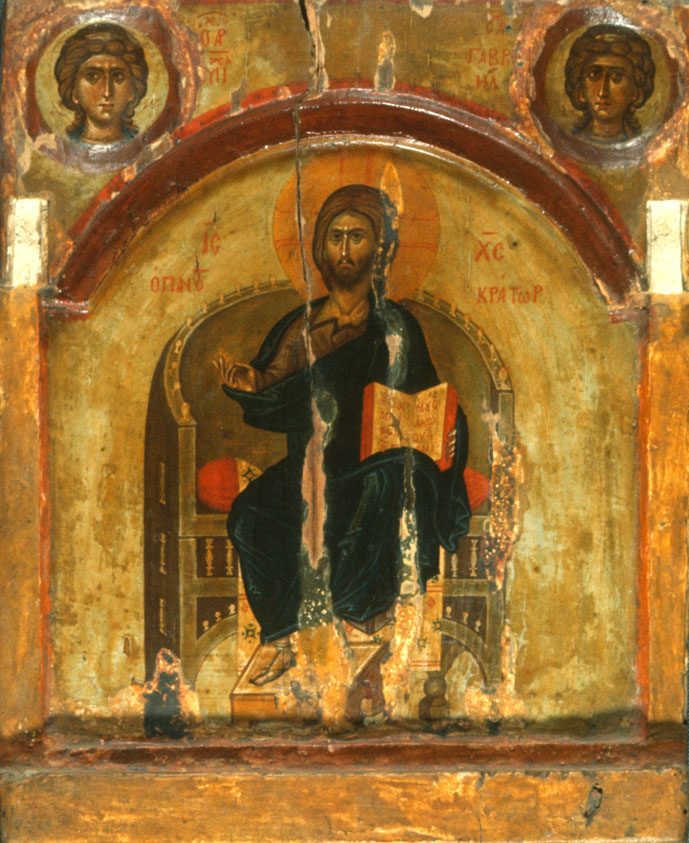 Above is a 12th century icon from Sinai showing Christ seated on a curved wooden throne. This icon was created at the same time as the Deesis mosaic in Hagia Sophia.
Above is a 12th century icon from Sinai showing Christ seated on a curved wooden throne. This icon was created at the same time as the Deesis mosaic in Hagia Sophia.
Every Orthodox church has a primary icon of Christ in the iconostasis, which is paired with an Icon of the Theotokos and the Christ Child on the opposite side of the Royal Doors which open into the sanctuary. There are many variants, some are bust images and others are of Christ enthroned. In some the Savior holds a gospel book in others he holds a scroll. Sometimes the book is open and other times it is closed. The work Pantokrator means ruler or judge of all and symbolizes His role at the Last Judgement. You will see that most of the icons have strong white highlights which is a technique that was used in icon painting in later times - especially after 1300. Pantokrator icons can be quite large, the splits in some of these icons are a result of the wood panel being made up of several pieces.
The first and the last two icons are from Saint Catherine's Monastery in Sinai.
It's interesting that several of the icons look like they were made with the same drawing.
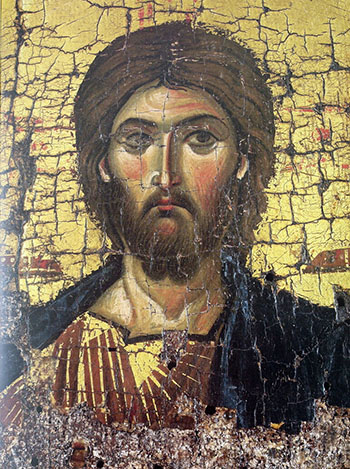
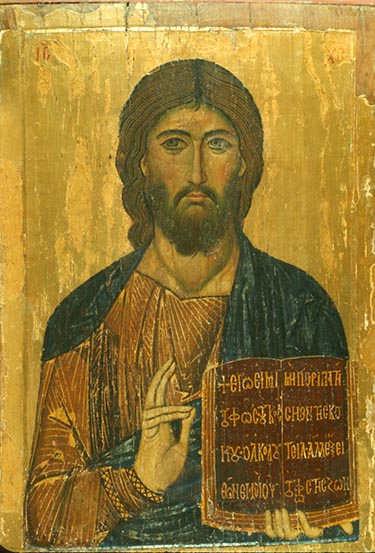 Above are two more icons from Sinai of Christ which dates to the 12th century and relate to Christ Deesis in Hagia Sophia. You can see how the highlights on the faces are fused rather than laid on in thin lines. The Gospels held by Christ in the second one have parchment dyed in Imperial purple with gold letters. Deluxe editions like this were special luxury editions.
Above are two more icons from Sinai of Christ which dates to the 12th century and relate to Christ Deesis in Hagia Sophia. You can see how the highlights on the faces are fused rather than laid on in thin lines. The Gospels held by Christ in the second one have parchment dyed in Imperial purple with gold letters. Deluxe editions like this were special luxury editions.
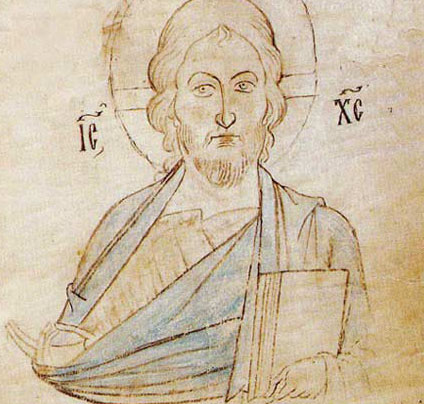 Above is a 12th century drawing of a Pantokrator from a manuscript. Images of Christ in manuscripts can be on introductory presentation pages with a donor or members of the Imperial family. Other images are scenes from the life and ministry of Christ on earth. Some of the most spectacular illustrations show him in the midst of the Heavenly court of angels with Mary and John the Baptist in a Deesis scene. There are also portraits of Christ.
Above is a 12th century drawing of a Pantokrator from a manuscript. Images of Christ in manuscripts can be on introductory presentation pages with a donor or members of the Imperial family. Other images are scenes from the life and ministry of Christ on earth. Some of the most spectacular illustrations show him in the midst of the Heavenly court of angels with Mary and John the Baptist in a Deesis scene. There are also portraits of Christ.

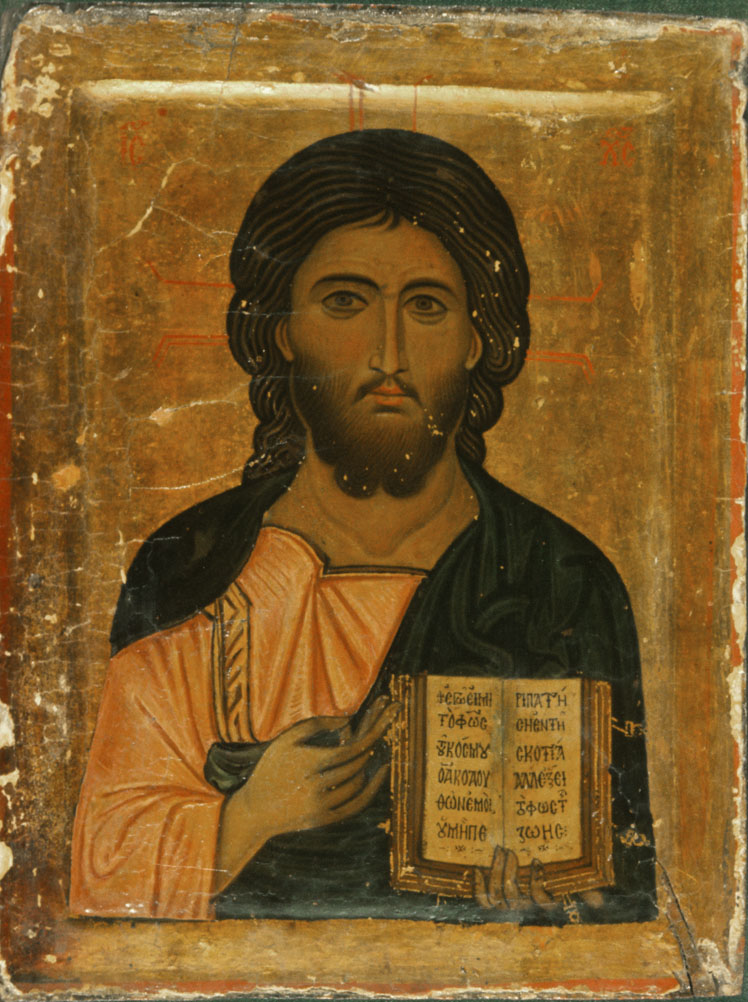
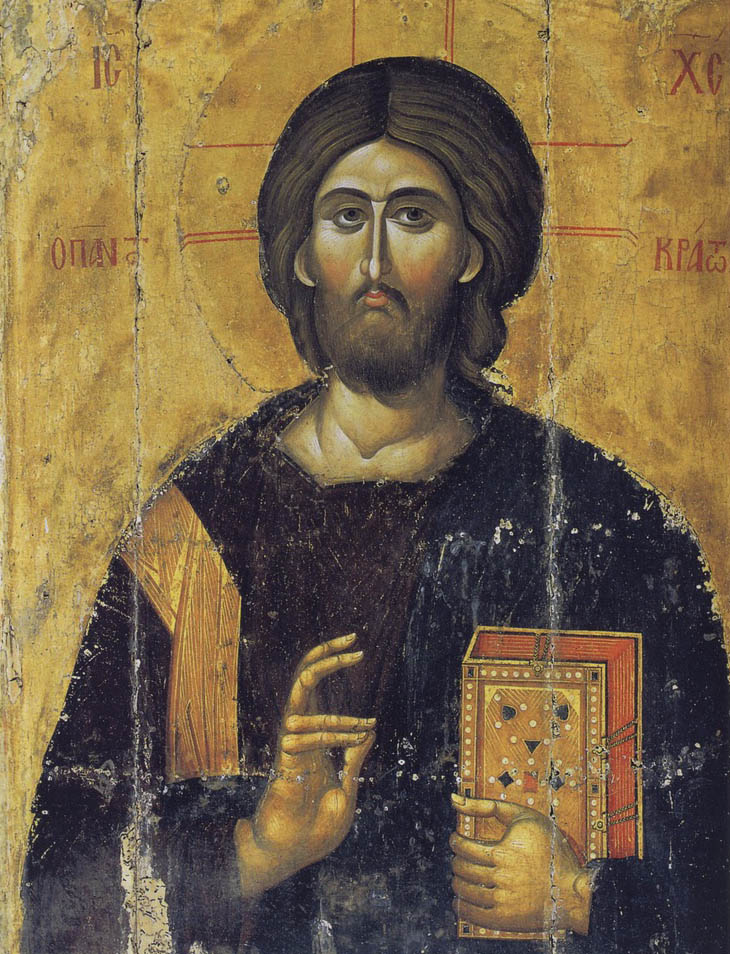
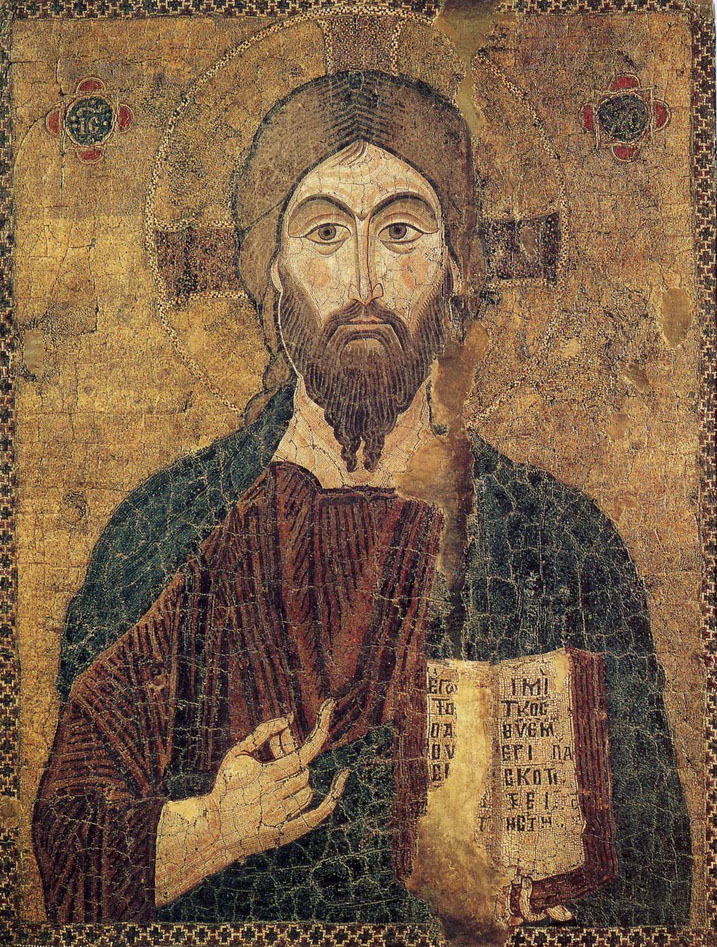
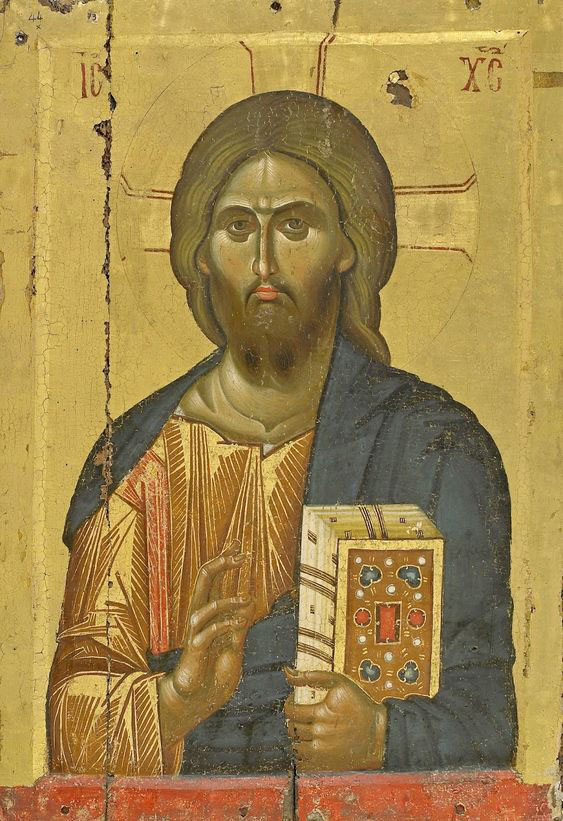
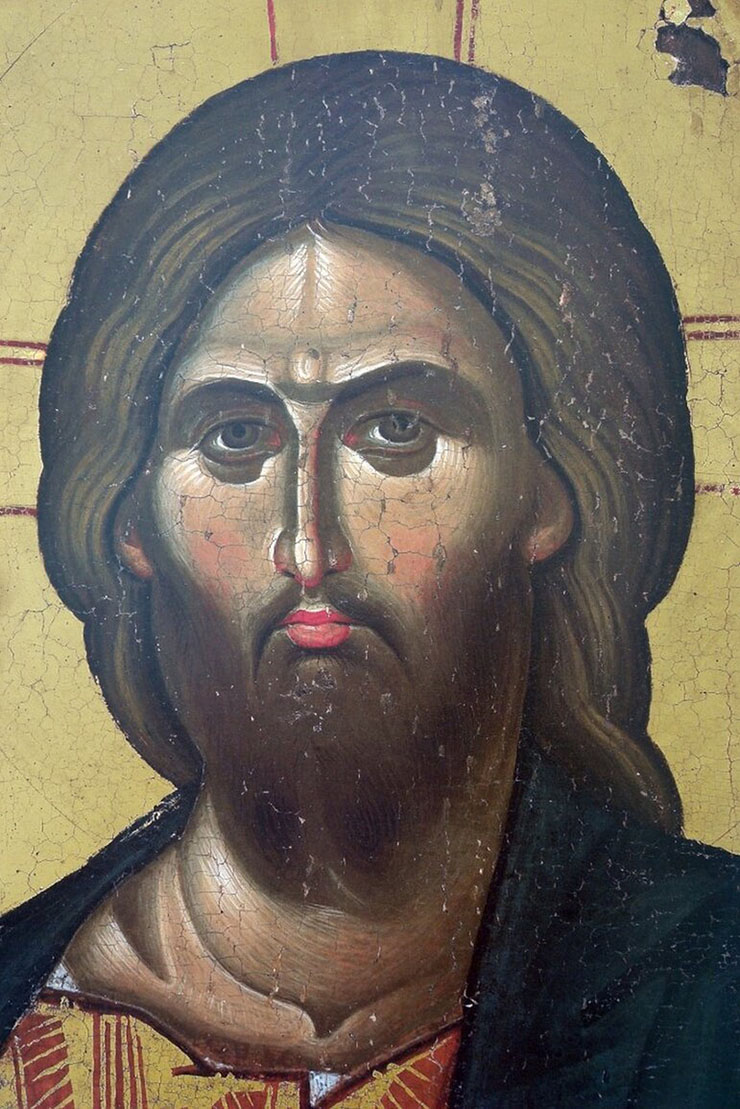
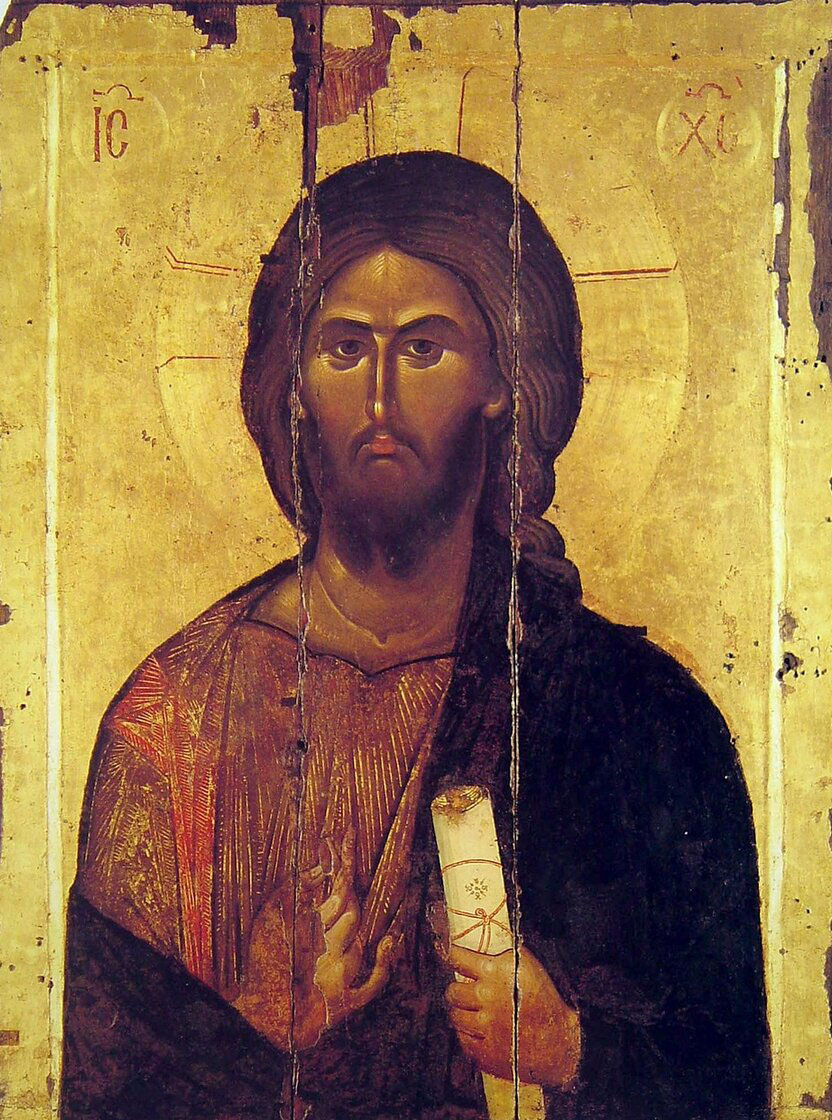
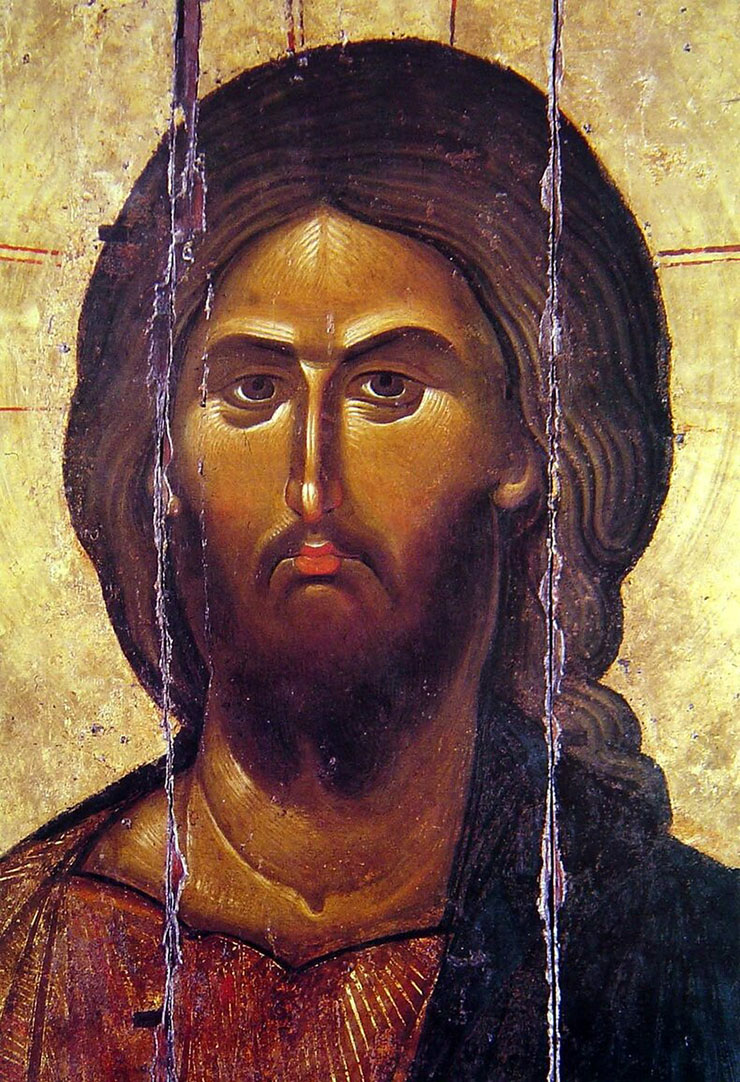
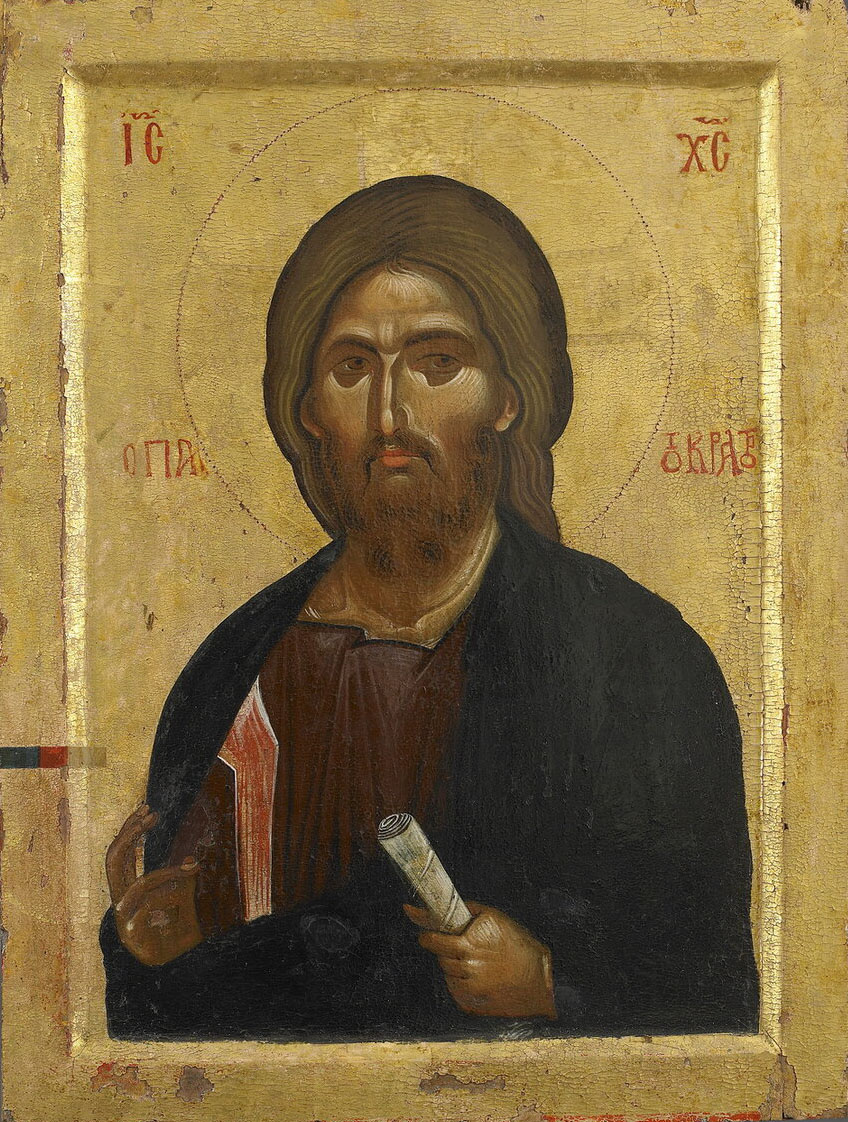
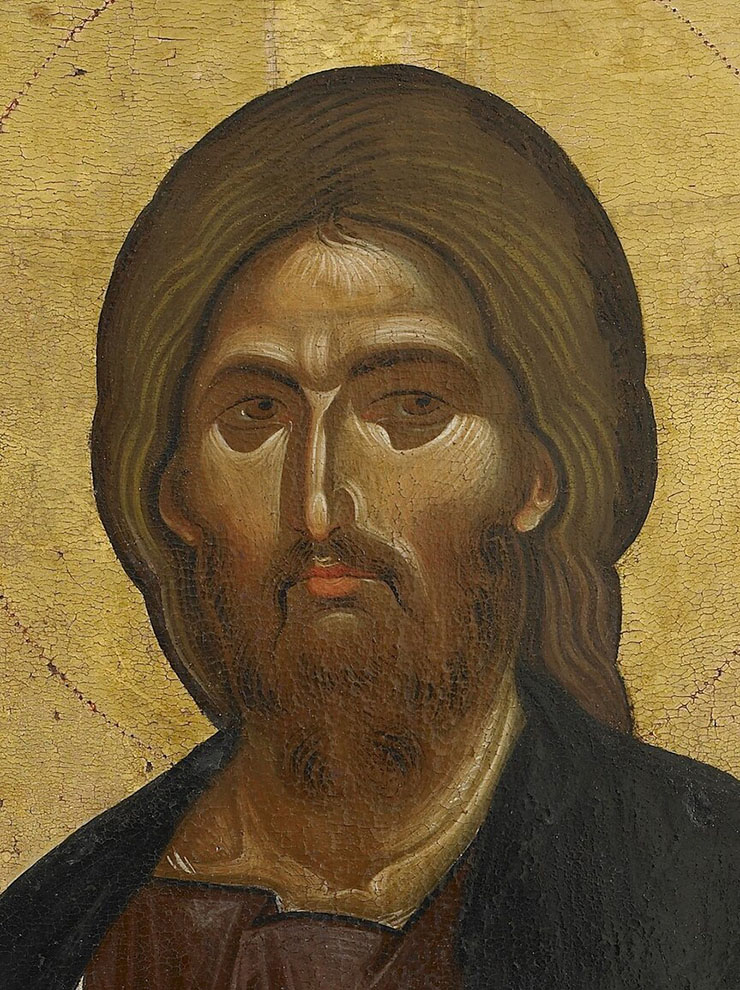
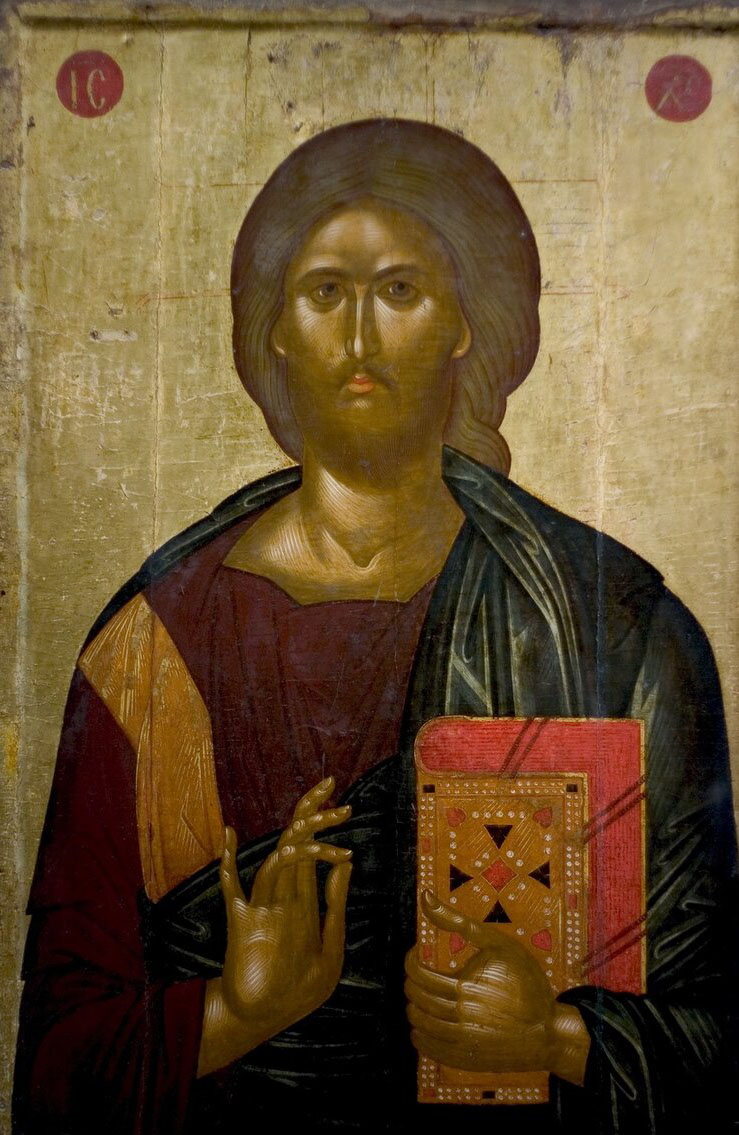
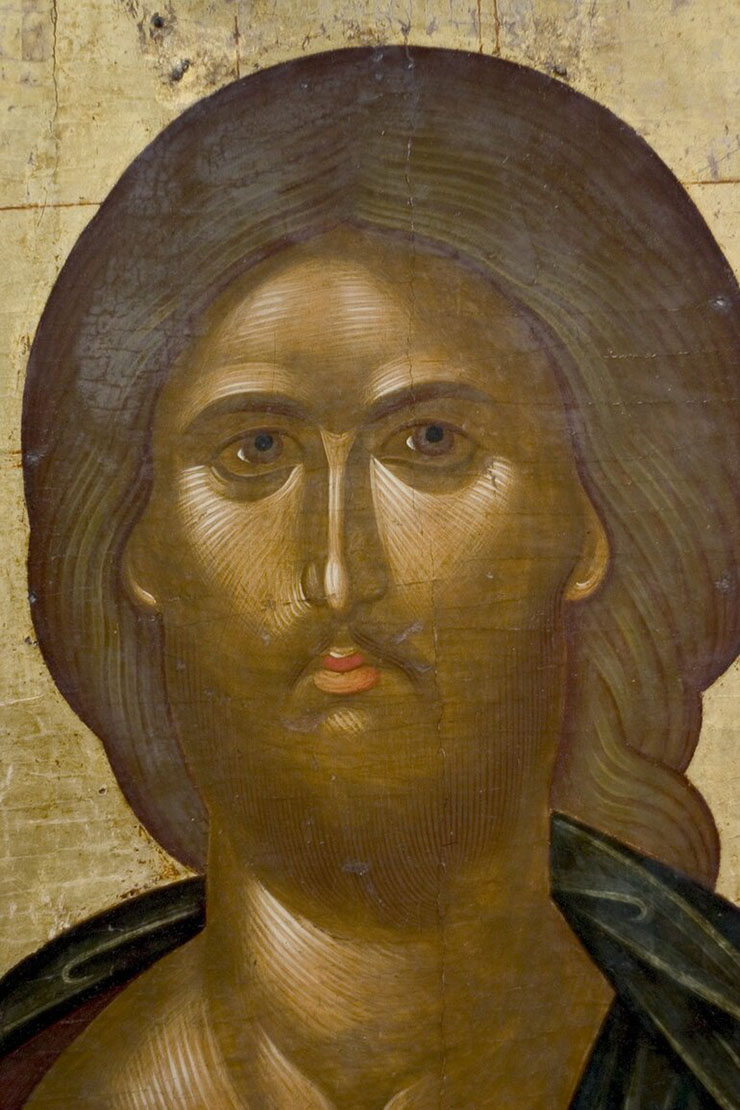
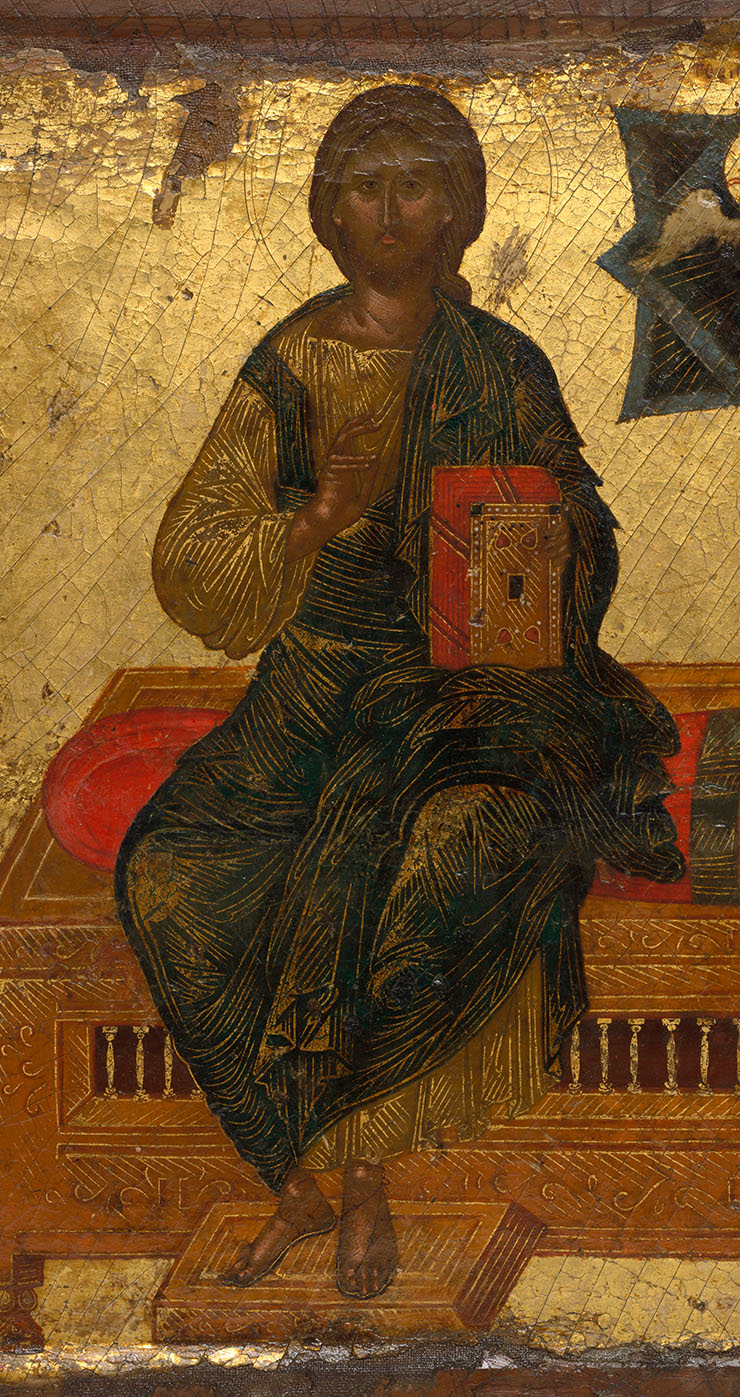
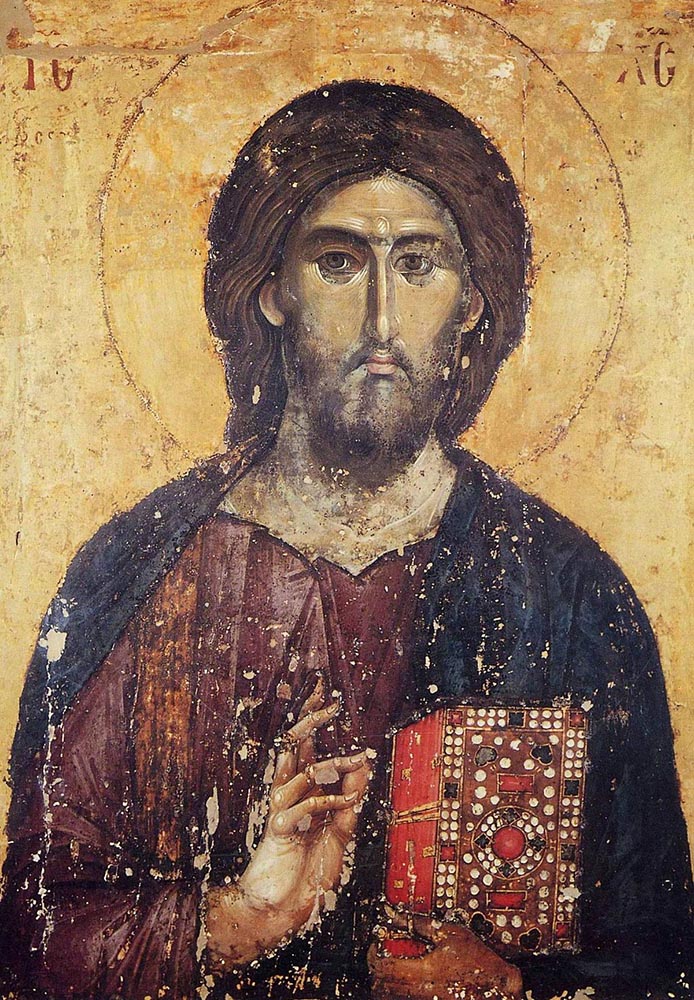
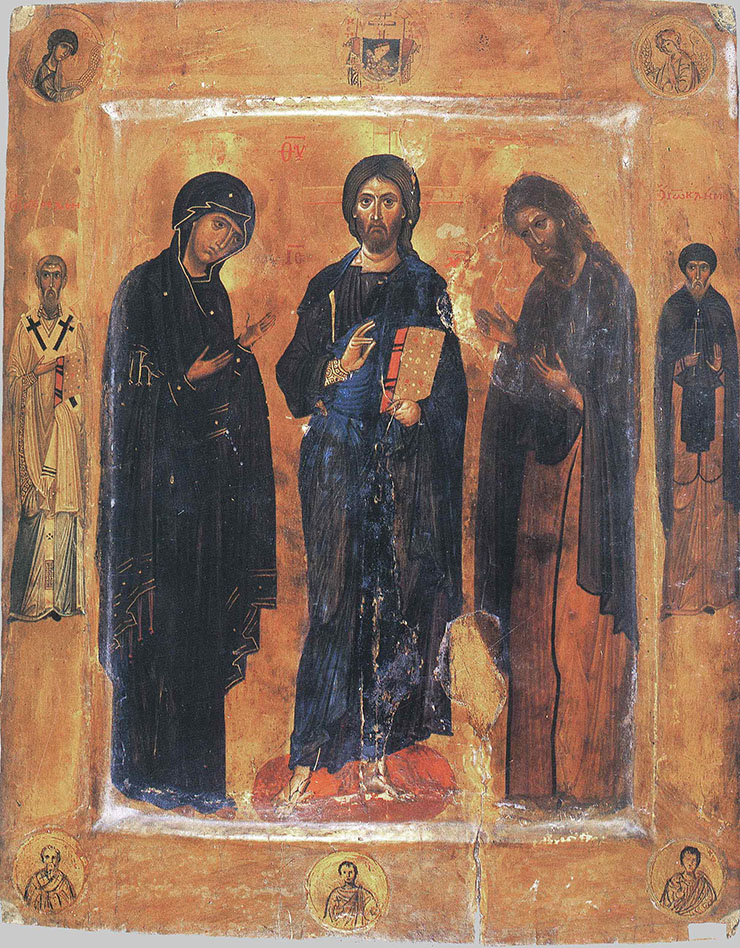
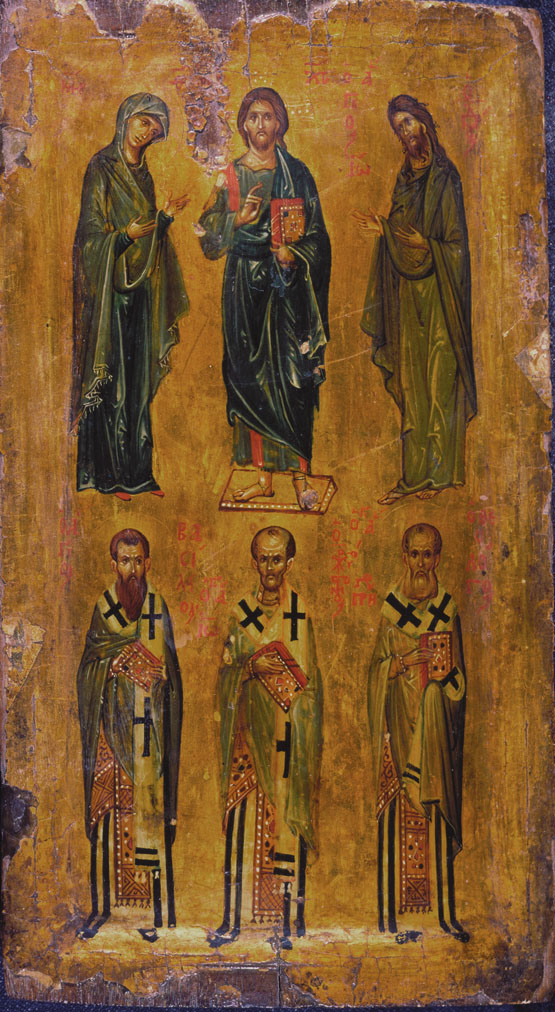
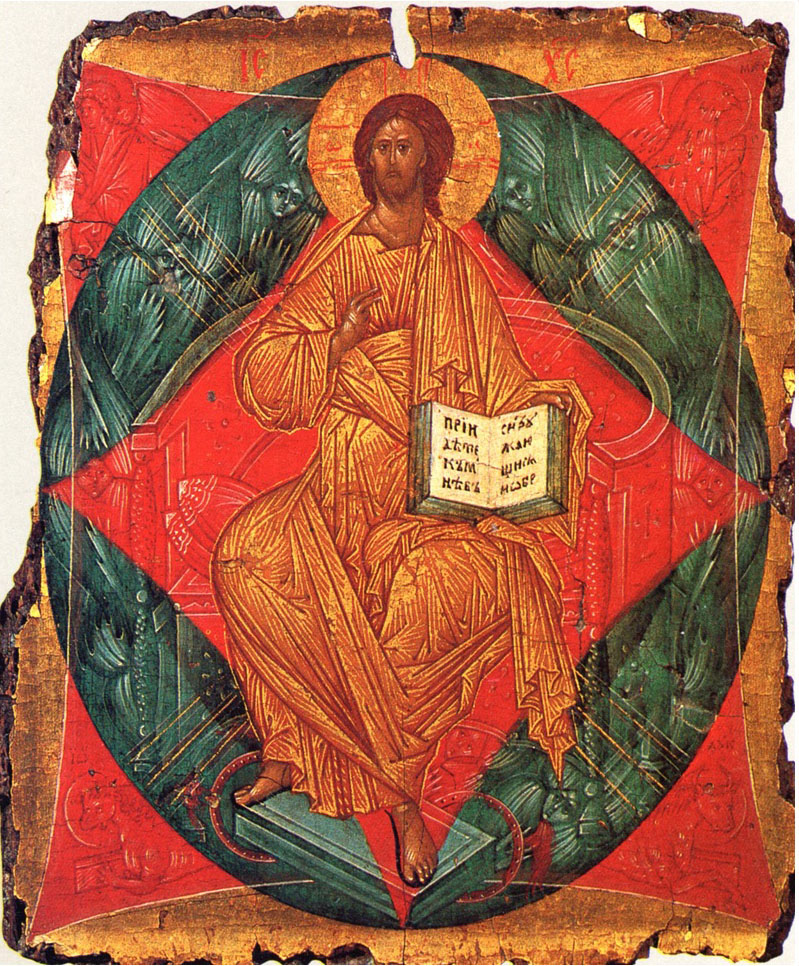




 click here for icons of christ
click here for icons of christ click here for icons of the theotokos
click here for icons of the theotokos click here for icons of angels
click here for icons of angels click here for icons of saints
click here for icons of saints








